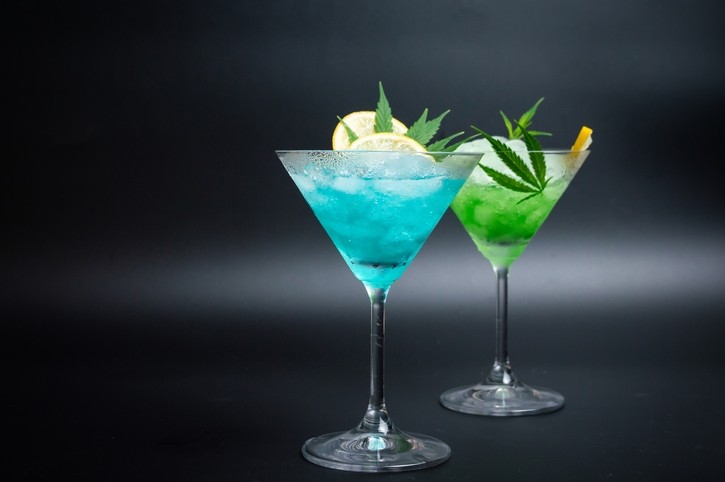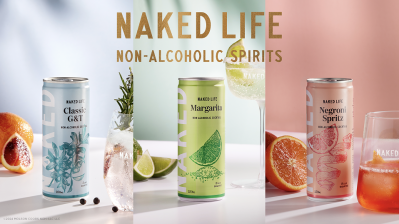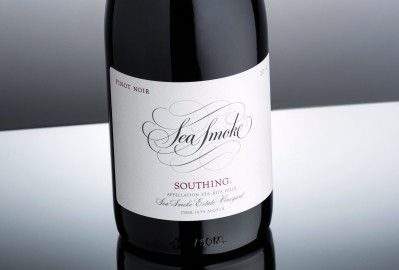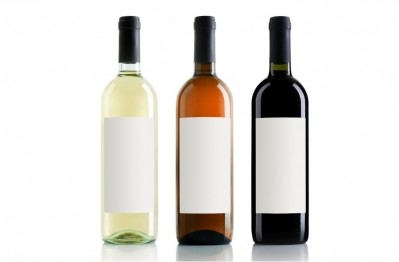Can cannabis beverages make their mark in bars and restaurants?

On-premise accounts offer a massive channel for drinks - whether alcohol or cannabis. But it's also important as a way for consumers to dabble in something new: with them relying on bartenders to suggest, create and serve a drink at its best.
So should cannabis beverage brands target this channel - and how can they find success?
A shifting landscape
To date, cannabis beverages have seen their biggest success in the off-trade.
Picnics, BBQs and at-home occasions have traditionally suited the beverage best.
But that picture is starting to change, explains David Mukpo, CEO and co-founder of LA-based cannabis cocktail and spirits brand, Pamos Beverage Co: whose distribution covers both the on and off trade.
“Even just in the past year we’ve seen a real shift toward on-premise demand for cannabis beverages," he said.
"The reality is that every year, more consumers are walking into on-premise locations asking for non-alcoholic options, and Pamos offers an alternative to alcohol that still provides a social effect.”
Pamos’ mission, as a brand, is all about realizing the cannabis beverage industry’s dream of becoming an alternative to alcohol.
It's one of the only THC-infused beverages available across bars and restaurants, but in stadiums, at events and in hotels.
In the same way that alcohol comes in a variety of strengths, Pamos offers a variety of dosages: ranging from a micro-dosed spirit with 2mg THC and CBD per serving for those starting out in the category, to a product with 6mg THC and 2mg per serving for those looking for something stronger.
The drink is designed to be fast-acting: meaning effects usually begin to wear off an hour or two after each dose.
Similar to alcohol, however, the duration of the buzz depends on an individual's biology (such as weight, previous exposure and amount consumed).
Cocktails, says Mukpo, offer a familiar and accessible entry point into THC.
“We believe Pamos belongs anywhere you traditionally would purchase and enjoy alcohol,” said Mukpo.
“Alcohol consumption is generally split 80% off-premise, 20% on-premise (according to IWSR), so that is our goal as we ramp up.
“We have seen the most initial success in bars and restaurants due to how easily cannabis beverages can fit into the existing framework.
"Pamos’ unique spirit offering fits well with trained bartenders who can create novel guest experiences with creative cocktail recipes.
"For events, hotels, and stadium experiences, the locations we work with have prioritized the Pamos Spritz as a more grab-and-go ready to enjoy option.
"We believe that the industry is just scratching the surface for on-trade consumption, but the adoption is already well underway.
"Nothing is under-explored for us, but it is about timing and making sure the right industry infrastructure is in place to ensure consumers have a responsible and safe experience.”
Will the on-trade help grow the cannabis beverage category?
The cannabis on-trade will be 'key to unlocking the real potential' of cannabis beverages, helping place it on an even footing with other beverage categories, according to Euromonitor analyst Spiros Malandrakis.
However, brands that want to see real success need to go beyond simply being another drink on a menu.
"Cannabis lounges will have to reinvent the roll of a social hub through the prism of a substance that is very different to alcohol," he said. That might mean a move away from loud, high-energy party settings towards experiential offerings (think board games or video games).
One of the key barriers at the moment is a lack of presence of such drinks in the on-trade. But if these can be resolved, "cannabis beverages could encapsulate a paradigm shift in the ways we drink, form communities and ultimately socialize," he says.
'The landscape is rapidly evolving'
Cannabis beverage brand WYNK claims a milestone as the first-ever cannabis beverage showcased at the National Restaurant Show in Chicago earlier this year.
The beverage is produced by Wherehouse Beverage Co: a next-generation beverage company from Pennsylvania company created in 2020 which is exploring the cannabis beverage category.
WYNK is sold in retail in Chicago and Minnesota, Texas and Connecticut; as well as bars and restaurants in Arkansas, Connecticut, Florida, Illinois, Louisiana, Maine, Massachusetts, Minnesota, Missouri, New Jersey, New York, Ohio, Tennessee and Texas.
Like Mukpo of Palmos, Phil McFarland, General Manager Wherehouse Beverage sees a shift in sales channels.
“While cannabis beverages are currently more popular in off-trade settings, the landscape is rapidly evolving. About 35% of our accounts in Chicago alone are on-premise, many in music venues,” he said.
The WYNK 1:1 blend of THC and CBD offers a ‘light and bubbly buzz’ suited to any night of the week. Effects typically begin within 10-15 minutes of consumption and last approximately 90 minutes. Available in 7.5oz cans with a 2.5mg dosage of both THC and CBD, and 12oz cans with a 5mg dosage of both THC and CBD, WYNK is made with all-natural flavors and comes in Black Cherry Fizz, Lime Twist, Juicy Mango, and newly released Tangerine.
'Demand is already very high'
The biggest challenges to cannabis beverages’ success in the on-trade, agree Mukpo and McFarland, is education. That means making sure both consumers and bartenders understand the category and the strengths of the drinks they are consuming.
“We have found that the demand both from operators and their consumers is already very high,” said Mukpo. “The main components we need to support operators with is ensuring they have a safe and predictable format to provide to their guests. We hear their need for education to be the priority with both staff and consumers, which is why we have partnered with the Cannabis Beverage Association in providing educational materials to make the industry as turnkey for any location that wants to fold THC beverages into their portfolio.”
McFarland adds that making a rough comparison to alcohol is a handy way to explain cannabis beverages and their effects. WYNK’s seltzers are designed to be sessionable: with the brand selling 2.5mg cans as one serving (clearly defined as one can) in the on-premise.
“Education poses the biggest challenge in the on-trade market. Operators ask: How do we incorporate this into our service? How do we educate customers about the appropriate serving size?
“We consider a 2.5mg serving equivalent to a glass of beer, wine, or shot of alcohol. For newcomers, we recommend a maximum of 10mg in their first session. Beyond that, if you view 2.5mg as a serving, bartenders can easily calculate consumption, similar to how they would with a light beer versus an IPA.
“The feedback from our on-premise accounts has been encouraging, with no customer complaints, excellent tips, and happy bartenders.”














